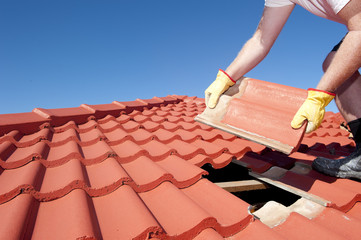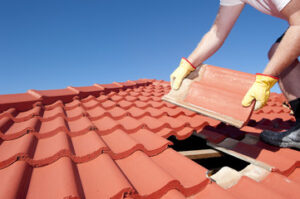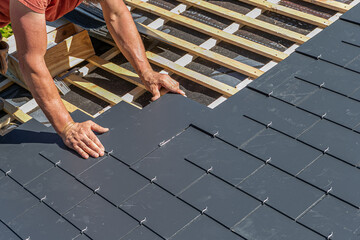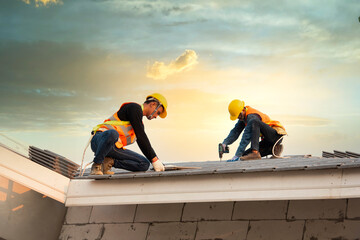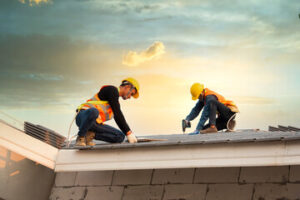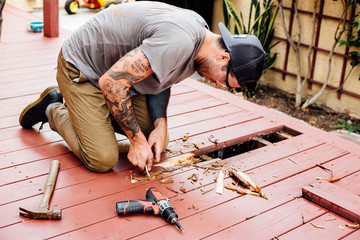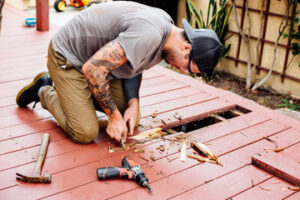Greensboro Landscaping can significantly increase your home’s curb appeal and resale value. It also requires planning, regular maintenance, and occasional upgrades.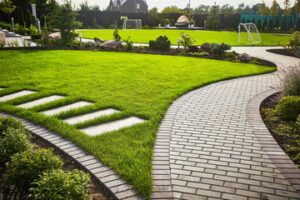
Landscapers focus on large-scale design elements like trees, ponds, and patios to create visual interest. They also install outdoor structures like fences, decks, and gazebos. They may also advise on water management strategies.
A lush green lawn is a popular yard feature that many homeowners desire. There are two common methods of installing a new lawn: sod and turf. Choosing the best option for your landscape depends on a variety of factors, including your budget and landscaping goals.
Sod is a layer of established grass that is harvested from a sod farm and installed on your property. It is a popular choice for people seeking instant gratification, as it eliminates the time it takes to grow and establish seedlings in the soil. In addition, sod helps control erosion on slopes and provides a more uniform appearance than seeding.
The key to successful sod installation is proper preparation. First, make sure to call 811. This nationwide hotline maps underground utilities in your yard and prevents you from accidentally disturbing a utility line while working. Once the area is marked, lay out a garden hose or sprinkler to dampen the soil and remove any large clumps of dirt. Once the soil is ready, use a rake to level and smooth it. Be sure to grade it 1 inch below all walkways and borders and 1/2 inch below sprinkler heads. If necessary, install irrigation and a bender board at this time.
Begin by laying the first sod roll against the longest edge of the area to be covered, making sure that it is touching and resting on the soil. Use a sharp knife to cut away any excess sod and pat it down around the edges of the lawn. Work in a brick wall pattern, staggering cuts, to ensure that the sod is not leaving any gaps. After laying the sod, use a lawn roller 1/3 full of water to firm the surface and help it retain moisture.
Once the sod is laid, it should be watered and kept moist for a few weeks to get established. After this, it can be mowed and treated with fertilizers and chemicals as needed, similar to any other lawn.
Although sod requires more immediate and regular maintenance than artificial turf, it offers a number of environmental benefits, such as carbon sequestration and reductions in water and chemical usage. Additionally, sod requires less energy to maintain, as it does not require the constant mowing and watering that many people avoid because of allergies.
Sod & Turf Repair
Adding grass to bare patches of your landscape is one of the best ways to keep the entire lawn looking pristine. However, proper planning and timing are key to the successful establishment of new turf. The best time to reseed or lay sod is late summer through early fall when temperatures are cooler and rainfall is higher. These conditions promote grass seed germination and root growth while reducing weed competition.
For a high-quality finish, professional services are recommended for sod or turf repair and installation. A quality installer will ensure a uniform appearance by staggering the seams and pressing them together with a roller to avoid gaps. They should also test soil pH and nutrients to ensure the turf is getting what it needs to thrive.
Once the soil is prepared, sod can be laid quickly. It is usually rolled into place to encourage the roots to adhere, and then watered thoroughly for the first few weeks to establish a firm root system.
Grass seed, on the other hand, takes much longer to grow and requires a lot of attention during the establishment process. Grass seed must be planted during the right temperature window, and it must be watered regularly to ensure the roots take hold and resist drought conditions.
While not as common, sprigging is another way to establish warm-season grasses. This method involves sprinkling the shredded stems of sod into the ground, but it is not often used because it requires a lot of attention to initial watering and has a high risk for desiccation.
Turf maintenance is a continual process, but the right routine can prevent serious problems. A thorough cleaning after winter and regular mowing, edging, and leaf removal help keep the surface healthy. In addition to these basic steps, aerating and core raking can help prevent thatch buildup.
If the turf is heavily used, frequent enzymatic treatments can help break down urine and reduce odors. In areas where pets are present, zeolite or odor-absorbing infills can be used to control odors and prevent urine spots from becoming permanent. Other turf maintenance includes re-soiling as needed, adjusting infill as it compacts, and adding nutrients to maintain the proper balance of nitrogen, phosphorous, and potassium.
Sod & Turf Removal
When sod is old or overtaken by weeds and you want to clear the lawn for gardening, adding a yard feature or another type of landscaping, it may be time to remove the turf and prepare the site. You can clear the sod by hand with a manual tool called a sod cutter or “sod kicker,” which is available at some home improvement stores and online. Using this tool makes the job much faster and easier and helps you get rid of the sod without breaking your back or spending money on a landscaping professional to do it for you.
Once you have removed the sod, it can be composted or taken to the Yolo County Central Landfill (fees apply). Sod that is dry or browned can also be used as a mulch. Be sure to lay the mulch thickly to prevent weed growth and keep moisture in the soil. Before you start digging, be sure to call 811 so a utility marking service can come out and mark the location of any electricity, water, gas, cable or internet lines. It is very easy to hit one of these lines and be out of service for a long period of time.
Consider the amount of work you want to do in your yard and the size of your landscape plants. A larger plant will require more upkeep and maintenance, such as mowing and weeding. It is best to design a smaller garden that will be less labor intensive and will look just as beautiful and add value to your property.
Several different methods of clearing the grass can be used including herbicide, sod cutting, solarization and sheet mulching. Herbicides and sod-cutting require heavy machinery and are expensive. Herbicides are also harsh on the environment and can kill native plants and insects. Solarization is more environmentally friendly and uses a variation of the same process as sheet mulching to deprive the grass of light and heat. It is very effective and cost efficient, but does not promote microbial activity or soil fertility, so it is only recommended if you plan to replace the grass with something else that will grow well in the sun conditions of your yard.
Sod & Turf Maintenance
Sod is a mature lawn grass grown on highly specialized farms where it receives constant and careful fertilization, mowing, watering and weed control. When it is harvested, it is precision cut into standardized sizes and delivered to the installation site for immediate use. This allows for quick, successful establishment and bypasses the lengthy seeding time often encountered when trying to establish a new lawn from seeds.
Once the sod is installed, it must be watered thoroughly immediately to ensure that it stays soaked. Ideally, it should be watered every day for the first month, with each irrigation reaching deep into the soil to encourage proper rooting and to avoid desiccation. Sod must be kept moist until it “knits” into the soil, typically within a week. Heavy usage or traffic on newly sodded areas is not recommended during this critical period of time.
Keeping a maintenance log will also help to ensure that the turf is being properly cared for. By documenting these activities and providing a historical record, it will be much easier to troubleshoot issues and identify patterns that may indicate a need for adjustments to the maintenance schedule. In addition, many turf manufacturers require a maintenance log in order to make warranty claims.
Watering Tip #1: It is crucial to keep the sod well-watered at all times but especially during hot weather. This means watering the sod until it is squishy, usually twice a day in summer.
Mowing Requirements
Each variety of turfgrass has its own growing and trimming requirements. It is important for the lawn care professional to be knowledgeable about these differences. A high quality lawn should be mowed no more than once each week, and not to remove more than 1/3 of the leaf blade.
It is also important to inspect the turf regularly for any signs of disease, insect infestation or damage to the turf surface or infill materials. This will help to identify problems and take action before the problem gets out of hand, saving time and money.

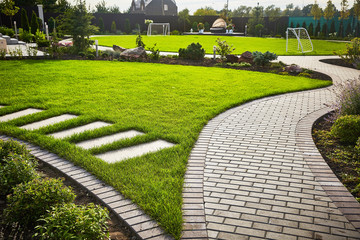



 It’s often said that a home’s value increases by up to 20% because of its attractive landscaping. However, this number varies depending on the type of landscaping and the size of the property. A large custom home, for example, may be able to command a higher price for its landscape because it has the space and potential for a more complex design.
It’s often said that a home’s value increases by up to 20% because of its attractive landscaping. However, this number varies depending on the type of landscaping and the size of the property. A large custom home, for example, may be able to command a higher price for its landscape because it has the space and potential for a more complex design.